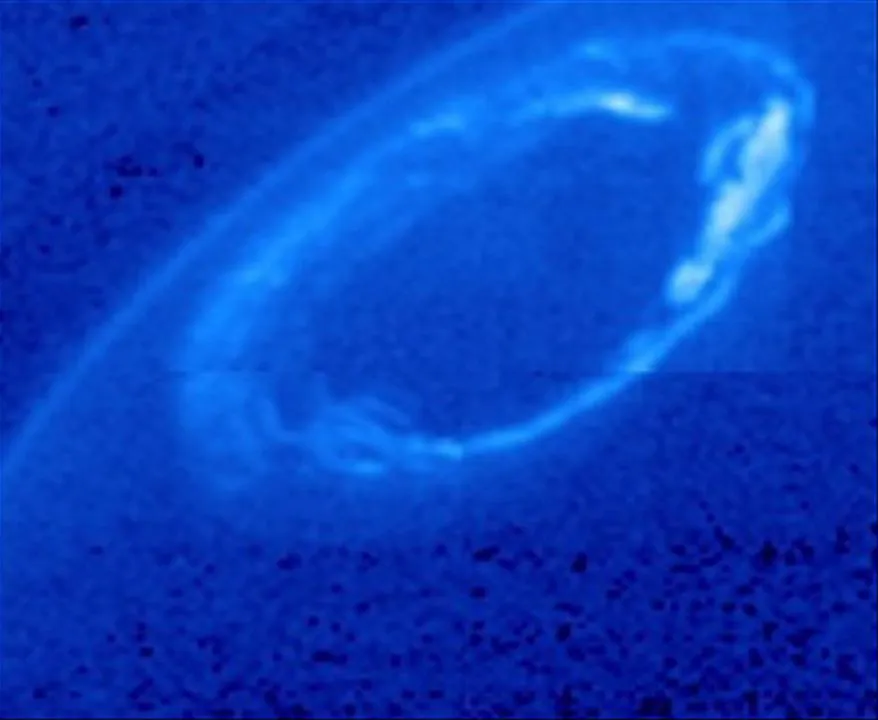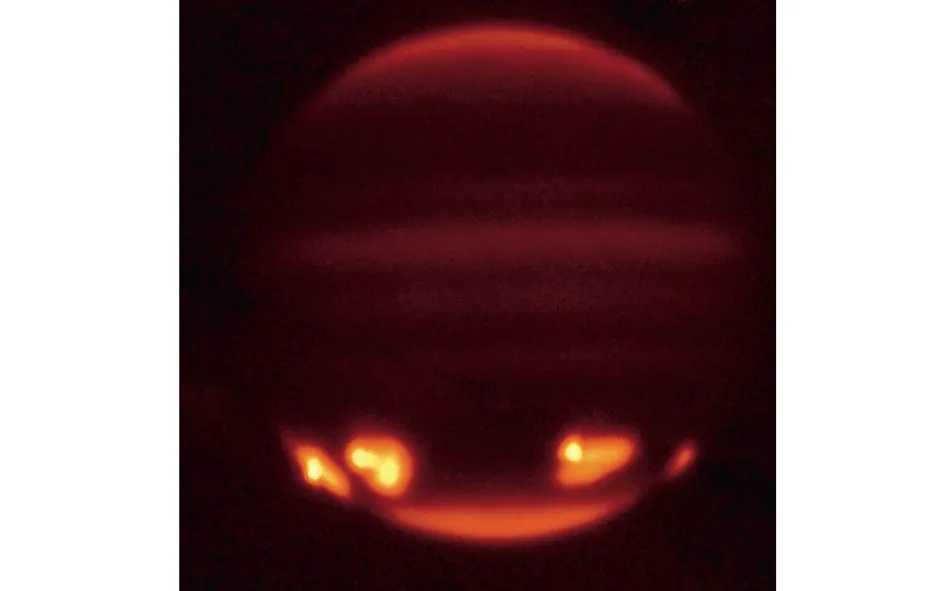The Solar System is our cosmic back garden. It should be one of the best-known parts of our corner of the Universe. Yet when the Hubble Space Telescope launched in 1990 our planetary neighbourhood was still deeply shrouded in mystery.
Looking up from Earth, the ever-shifting atmosphere blurred our view of the planets, making it difficult to see their features. Above the turbulent air, Hubble could watch these worlds in peace and has been doing so for the last three decades.
This long life has been one of Hubble’s greatest assets, making it possible to reveal the weather and climate patterns of changing seasons on our sister worlds as they make their journeys around the Sun. The Hubble science team has taken advantage of this unique long view by undertaking a project called the Outer Planet Atmospheres Legacy (OPAL).
“OPAL employs Hubble to look every few months at Jupiter, Saturn, Uranus and Neptune to see if they’ve changed,” says Jennifer Wiseman, Hubble’s senior project scientist. “Through OPAL we’ve learned how the Great Red Spot on Jupiter, a giant storm, is actually shrinking and changing colour over time.

"We see new storms cropping up, and we see them coming and going on some of the other outer planets too. Studying the changing nature of the planets in our Solar System is something that Hubble is enabling us to do through both its clarity of imagery and its longevity.”
Mission support
Of course, Hubble hasn’t been the only one watching the planets over the years. Since its launch, dozens of missions have been sent across our Solar System and Hubble is often called upon to supply much-needed context.
When Cassini arrived at Saturn in 2004, it could only see small parts of the planet at a time. Hubble, however, was able to take in the entire planet. While this was at a much lower resolution, the telescope was able to track storms and auroral activity to help planetary scientists understand the data Cassini was sending back.

“This profoundly improves the science return from any of these particular missions, compared to them operating on their own,” says Wiseman.
Mars has been another target of Hubble’s attention as it works in concert with the armada of spacecraft on and around the Red Planet. The telescope has helped to track the huge dust storms which blow across the planet every Martian year. Once again, this gives a global appraisal of the storm’s progress while the in-situ probes note localised changes such as temperature and pressure.
Read more about Mars:
- Move over, Mars: why we should look further afield for future human colonies
- The next great search for life on Mars
- InSight: what NASA's mission to Mars could find inside the Red Planet
It’s not just during missions that Hubble offers support, however. For almost every planetary mission of the last 30 years, Hubble has been used to scout the way before the spacecraft even reached its target.
“Hubble was used to help in planning the New Horizons mission which passed by the Pluto system in 2015,” says Wiseman. “The space telescope’s observations helped inform the planning of that probe’s trajectory and get it safely to Pluto.”
Before New Horizons’ approach, the operations team feared flying into an unseen moon or other obstacle around the dwarf planet, and so used Hubble to search for potential hazards. It was during this campaign that Hubble revealed the presence of a pair of moons, Nix and Styx, allowing New Horizons to plot a trajectory which avoided them.
A Hubble's-eye view on the Solar System
Hubble offers another perspective that many of these planetary spacecraft lack – the ability to observe in the infrared and ultraviolet.
For the Juno mission at Jupiter this capability provides extra resolution to its observations of the gas giant’s magnetic field. Juno’s instrument payload cannot register the high-energy, ultraviolet aurorae these fields create but the Hubble telescope can. By combining the two, astronomers are given a far more complete view of the planet, allowing them to work out even more detail about the magnetic fields of this giant world.
Discover more about the Hubble Space Telescope:
- 10 of Hubble’s greatest discoveries
- Beautiful Hubble Space Telescope images you probably haven’t seen before
- 10 future space missions to look forward to
- Who really discovered Hubble’s Law?
“We’ve also used Hubble to study the nature of some of the moons of these planets, and we’ve revealed some quite unexpected results,” says Wiseman. “For example, when Hubble observed some of the moons of Jupiter, we found that both Ganymede and Europa showed signs of liquid water oceans under an ice-crusted outer layer.”
In 2016, Hubble helped to confirm the presence of water outside the moons as well, when it discovered there was a plume of water ice fountaining high over Europa, forced up from an underwater ocean through the cracks in the moon’s crust.
But some of Hubble’s greatest triumphs have come from those times when the Solar System threw out something unexpected.
On the lookout for interstellar visitors
“One of Hubble’s most famous detections happened early on in its career, when comet Shoemaker-Levy 9 unexpectedly collided with Jupiter in 1994,” says Wiseman. As soon as astronomers realised the comet would collide, they called on the Hubble team to make sure the telescope was watching.
“That incredible set of images completely transformed our understanding of how dynamic the Solar System is,” says Wiseman. “We realised how vulnerable planets actually are to being impacted by objects and debris whizzing around.”

Hubble has observed many comets and asteroids since then, but in the last few years a new category of transient space rock has been added to the line-up – interstellar visitors.
In 2017, asteroid ‘Oumuamua was seen speeding through our Solar System, having been thrown out of another star system. Then in late 2019, comet 2I/Borisov followed suit. In both cases, Hubble was on hand to capture the objects on camera as they flew by.
Since the Hubble Space Telescope launched in 1990 it has revolutionised our knowledge of the worlds in our back garden. The telescope has been a key tool in helping to unravel their mysteries, but there are still plenty of secrets hidden in the shadows of these distant worlds. As long as it’s still running, astronomers will be calling on Hubble to help drag them into the light.
- This article first appeared in issue 348 ofBBC Science Focus Magazine
From BBC Sky at Night Magazine:
- Hubble at 30: three decades of the famous space telescope
- 'How we serviced Hubble': Mike Massimino reveals all
- How Hubble’s successor the James Webb Space Telescope will observe the Universe
- Astronaut Kathy Sullivan on launching the famous space telescope
- What was wrong with Hubble’s mirror, and how was it fixed?
- Radio Astronomy Podcast: 30 years of the incredible space telescope
- How did the space telescope come about?
- What Hubble's launch meant to me, as an amateur astronomer
- How Hubble changed our view of the Universe
- Why did astronauts service the Hubble Space Telescope?
- How the Hubble Space Telescope is used to study exoplanets
- A history of the Hubble Space Telescope

